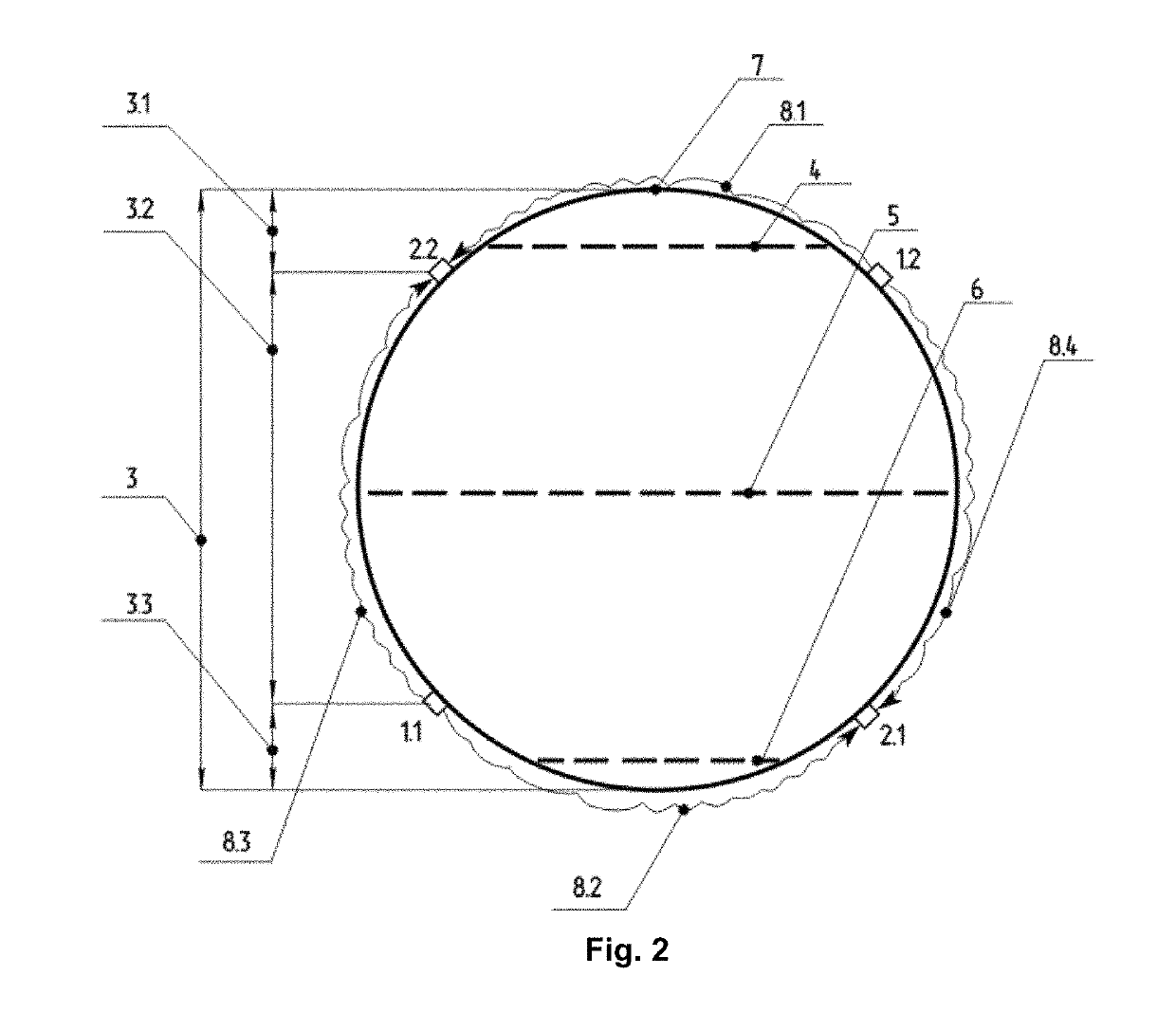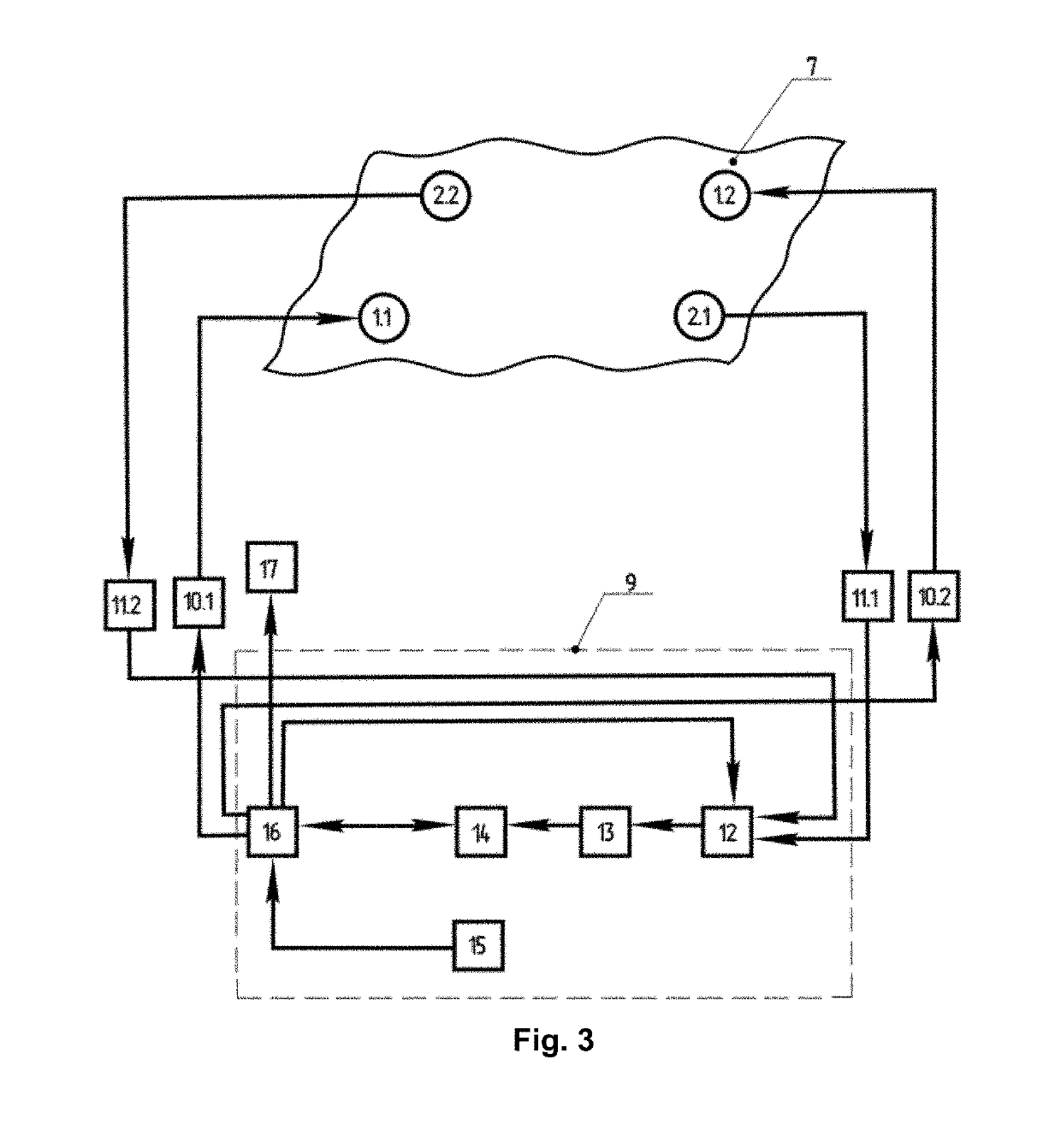Method for controlling the liquid level in tanks as per characteristics of lamb waves and device for ultrasonic control of the liquid level in tanks
a technology of ultrasonic control and liquid level, which is applied in the direction of liquid/fluent solid measurement, engine lubrication, survey, etc., can solve the problems of reducing reliability and accuracy, affecting and instability of information signal in this method, so as to accelerate the process of calibration of a measuring scale and increase the accuracy of liquid level measurement. , the effect of increasing reliability
- Summary
- Abstract
- Description
- Claims
- Application Information
AI Technical Summary
Benefits of technology
Problems solved by technology
Method used
Image
Examples
Embodiment Construction
[0030]The device for control the liquid level in the tanks comprises (FIG. 3) the first acoustic emitter 1.1 and the first acoustic receiver 2.1 fixed to the outer surface 7 of the tank (reservoir), forming the first horizontally arranged pair of acoustic transducers, and the second acoustic emitter 1.2 and the second acoustic receiver 2.2, forming the second horizontally arranged pair of acoustic transducers, each comprising one piezoelectric transducer (not shown in the diagram). In this case, the first and second pairs of acoustic transducers are installed along different lines parallel to each other and liquid level simultaneously, at fixed distances, both horizontally and vertically, forming the first vertically arranged pair consisting of the first acoustic emitter 1.1 and the second acoustic receiver 2.2 and the second vertically arranged pair consisting of the second acoustic transmitter 1.2 and the first acoustic receiver 2.1. The distance between the horizontal pairs of ac...
PUM
 Login to View More
Login to View More Abstract
Description
Claims
Application Information
 Login to View More
Login to View More - R&D
- Intellectual Property
- Life Sciences
- Materials
- Tech Scout
- Unparalleled Data Quality
- Higher Quality Content
- 60% Fewer Hallucinations
Browse by: Latest US Patents, China's latest patents, Technical Efficacy Thesaurus, Application Domain, Technology Topic, Popular Technical Reports.
© 2025 PatSnap. All rights reserved.Legal|Privacy policy|Modern Slavery Act Transparency Statement|Sitemap|About US| Contact US: help@patsnap.com



